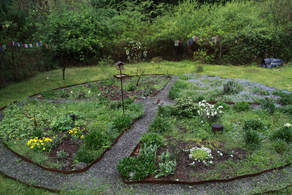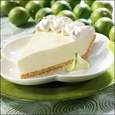|
Ozark Green Thumb BCMG Monthly e-Newsletter |
|
|
 On July 21st Baxter County Master Gardeners attended a special “Annuals to Perennials” Program developed especially for newest Master Gardener mentees “Annual” and their mentors “Perennial”. The purpose of the program was to welcome newest Master Gardeners and their mentors. The meeting was held in Batesville. Master Gardener mentees and mentors from 11 counties were present. Dr. Kim Pittcock, Professor of Horticulture at Arkansas State University discussed and demonstrated various methods of plant propagation. The next speaker was Janet Carson, Horticulture Specialist for the University of Arkansas Cooperative Extension Program and coordinator for the Arkansas Master Gardener program. Janet outlined the Master Gardener program, and then discussed ‘Arkansas Diamonds’, highlighting some of the newest Annuals, Perennials and Shrubs introduced in the last four years. 2018 Master Gardener classes will be held on five Wednesdays October 17 to November 14. Contact Mark Keaton Baxter County Extension Agent for more information and to enroll.  Far left is Jon Smith and on the far right are James Wiegand and Debbie Legner mentees from the fall class of 2017. In the center left to right are mentors Anita Hayden and Audrey Holt.
0 Comments
HATCHERY OUTDOOR ADVENTURE Volunteers
The Hatchery Outdoor Adventure Day is being held this year on Saturday, 09/08/18. The event begins at 8:30 am and ends around 2:00 pm. Each year we service 400 - 500 children with some type of garden craft. We are asking for your assistance in working this great event. This allows you to gain work hours with no digging, and have so much fun doing it. Lunch is provided for the volunteers, and we will have refreshments and water. We have a couple of ideas for the kids garden related craft project, but want to see what ideas you might have about what we can do. In the past we have done planters, sock chia heads, sweet potato growing pots, water bottle bird feeders, and other crafts. If you have an idea please share that with me so we can see if it might work and/or be better than the other ideas we have already. The craft should be something that can be done by all ages of children, can be completed in just a few minutes, is not terribly messy, can be carried by the children during the day, materials can be gathered easily and quickly, and is not too expensive. We are not going to do anything involving peanut butter to avoid creating problems for anyone that might have an allergy. Dependent upon which craft idea we choose we may also need to have a work day prior to the actual event to complete preliminary items. Please let me know if would be able to help us this year, if you might have any good ideas, or you have any questions or suggestions. Contact Darrell Stewart if you can help with this fun event. BAXTER COUNTY FAIR HORTICULTURAL EXHIBIT Volunteers Baxter County Master Gardeners manage the exhibit listings for the horticulture section of the Baxter County Fair Book. We oversee the horticulture room, including the Junior and Senior Horticulture Exhibits at the Baxter County Fair. Coordinators recruit and train other Master Gardeners to register exhibits and to staff the horticulture room at fair time. An exhibit grooming table is also available to exhibitors, staffed by Master Gardeners during the fair registration hours to assist with final entry preparations. Contact Rick Gatewood if you are interested in helping September 11th-15th. SPRING SEMINAR Chairperson We need a chairperson for our annual Spring Seminar. Jane Druff, who has chaired this event for the last two years, has a great committee, many of whom will continue to work on this event. Jane will also lend guidance and ideas to help the new chair. The church has already been reserved for March 9, 2019, but it will soon be time to start planning. Either Jane or myself would be happy to sit down with you and answer any questions or concerns you may have about taking over this job. And I can promise the Board supports this event and the chair. So, if you think you 'might' be willing to become Seminar Chair, please get in touch with Ceil Gasiecki; and we'll make sure we deal with any concerns. Many thanks for all your help and support.  For more than 5,000 years, natives of the Western Hemisphere built sacred cairns surrounded by one or more concentric circles, with spokes or stone lines radiating outward. Based on the number four (representing the cardinal directions and thought to be situated at energy vortexes), sacred circles were used all over the world for ceremonies, as places of worship and to communicate creation stories. Rich in symbolism and powerful as healing places, these edifices stand testament to nature-based and deeply spiritual cultures. Today’s medicine wheel gardens are based on the circle—the sacred natural shape symbolic of the interconnections of all life. Their round designs feature a central focus and four or more paths that carve the garden into pie-shaped beds. Most are planted with perennial and annual herbs, some featuring only medicinal herbs, others encompassing a wide variety of culinary, ornamental, tea, heirloom, cosmetic and healing herbs or indigenous herbs, grasses, shrubs and cacti. Medicine wheel gardens are intensely personal, and one’s choice of plants, materials and symbolic ornaments reflects the inner garden of the spirit. To create a medicine wheel, gather five marker stakes, a hammer, measuring tape, compass and some string or lime. Rocks mark the important yearly dates around the outside circle (see diagram below), so a good-size rock pile also would be handy. To start the wheel, drive a stake into the ground at the desired center point. Using a compass, locate the four cardinal directions and mark each with a stake 4 feet from the center. Mark the circle by joining the four cardinal direction stakes with string. Once the circle is marked, prepare the circle as you would any herb bed. If the site is on a lawn, till or dig out the sod, being careful to keep the five stakes in place. Mix in peat or compost, a small amount of bone meal (or lime or wood ash) and topsoil. In general, herbs tolerate a wide range of conditions but prefer well-drained, slightly alkaline soil. Lay 24-inch-wide heavy plastic landscaping cloth from each directional stake toward the center to form paths. Spread gravel, shells, wood chips or other natural material over the plastic and replace the four directional stakes with large rocks. These represent the spirit keepers of each direction and may be adorned with drawings or artifacts. Use cedar logs, pot shards, bricks or smaller rocks to edge the paths and define the circle. Replace the center stake with a large rock, boulder, piece of driftwood, tree branch or other object with significant meaning. Many traditional medicine wheels feature a buffalo skull in the center because in several Native Plains cultures of North America, it signifies creation or the center of all life. Select plants for each quadrant (see Page 15) and plant hardened-off seedlings after the last frost, allowing plenty of growing room (10 to 18 inches) between each. Because you will need one to six plants of each kind, it may be more convenient to purchase seedlings from a nursery than to start from seed. Never use any chemicals on or near the medicine wheel garden. The people who formed primitive medicine wheels displayed a reverence for the Earth through sacred rituals, ceremonies, everyday blessings, cleansing and visions. They gave thanks, asked for guidance, used intuition and understood their world on many levels. For us, there is much to learn from the medicine wheel. We too can use it to pause and ponder, dream, reflect, pray and plan. Excerpt from Mother Earth News
February/March 2004 By Pat Crocker AUGUST GARDEN CHECKLIST
For more information on any of the above points, contact the U of A Division of Agriculture Cooperative Extension office at 425-2335.  This is an simple recipe that is tart but not too sweet in a graham cracker crust. Ingredients:
Combine ingredients. Beat until well blended.
Pour into crust. Bake at 325 degrees for 15 minutes. Allow to chill in refrigerator at least 2 hours before serving. Makes 8 servings.  This is a tasty recipe to use produce from your garden. Fresh okra is very perishable. Keep no more than 2 to 3 days in the refrigerator. Ingredients:
Instructions:
Heat oil in skillet. Mix okra, tomatoes, onion, and salt. Saute in oil 5 minutes. Add chili powder, pepper sauce, and water. Mix well. Cover and simmer over low heat until vegetables are tender and mixture thickens. Serves 6-8. |
Archives
April 2022
|
|
